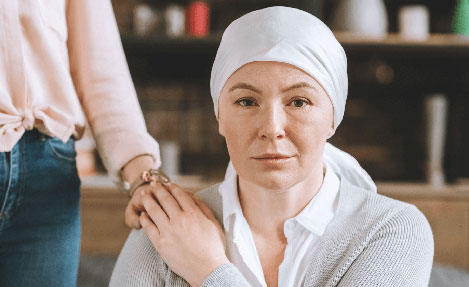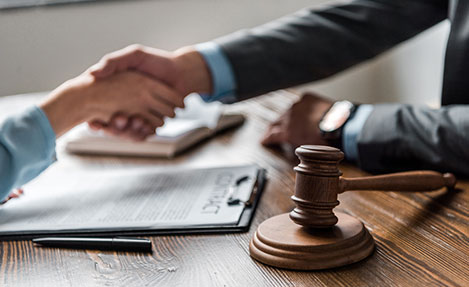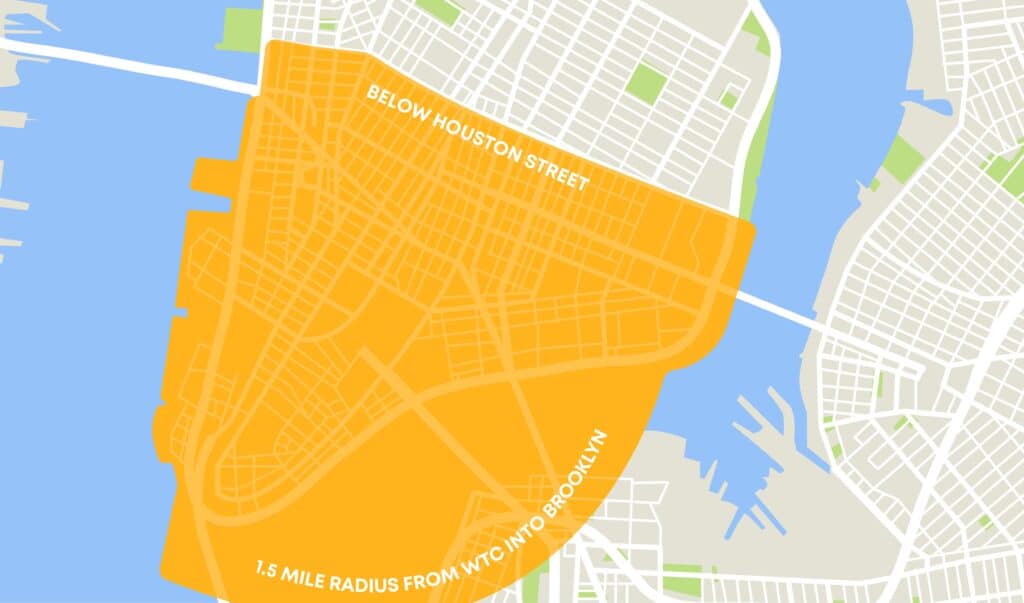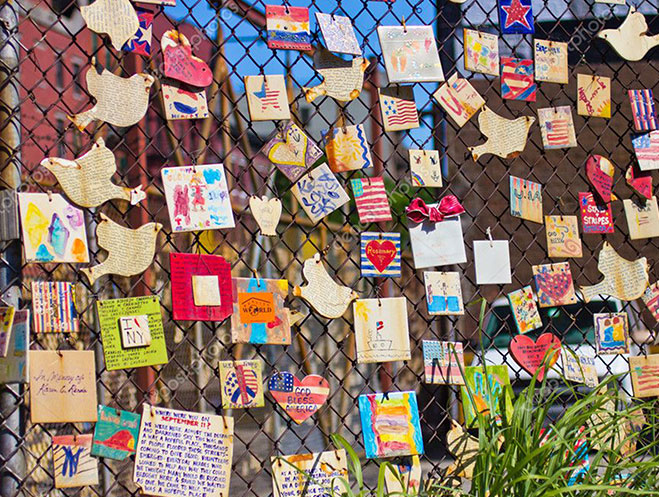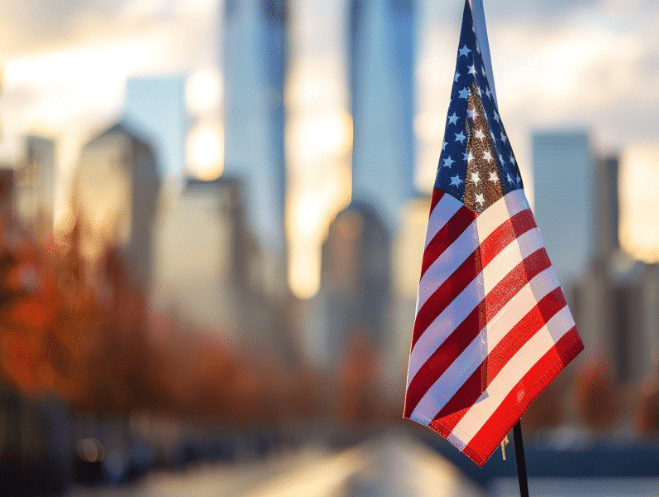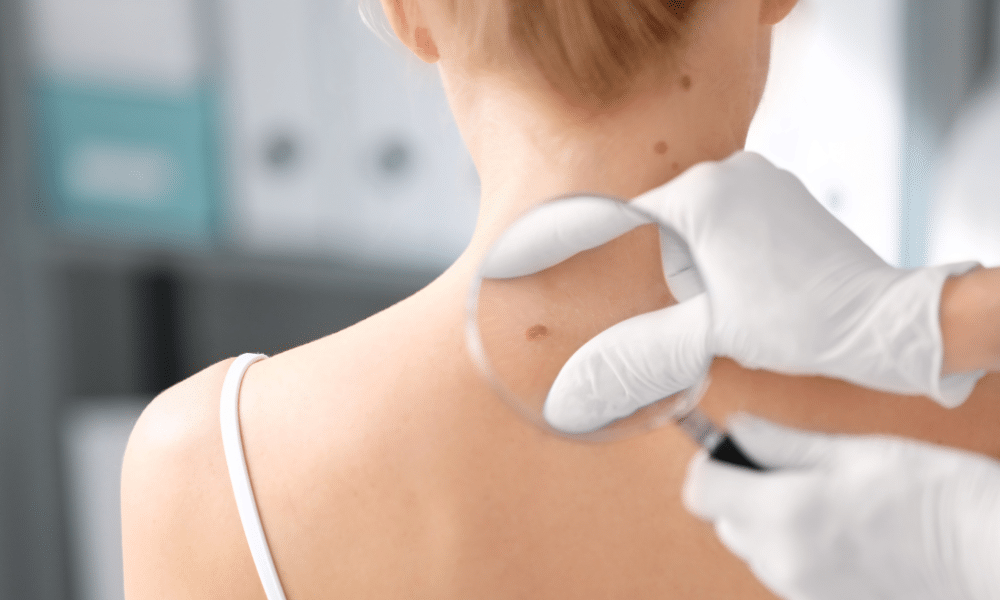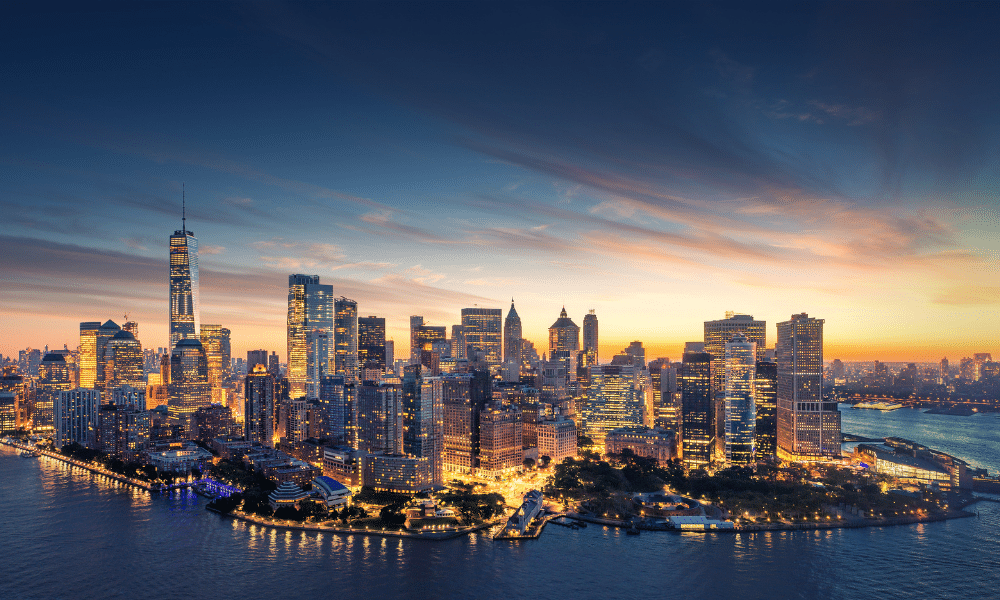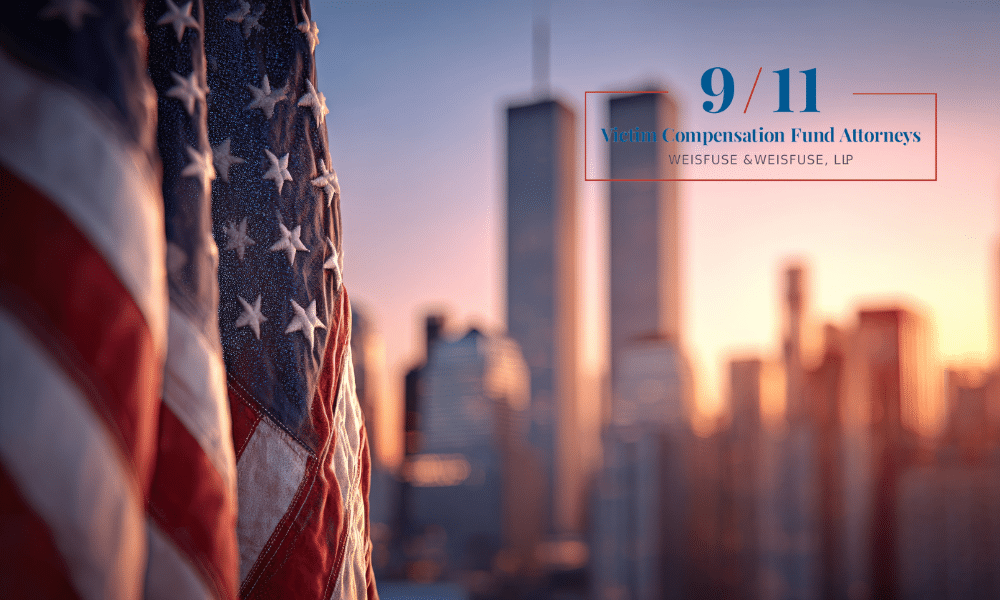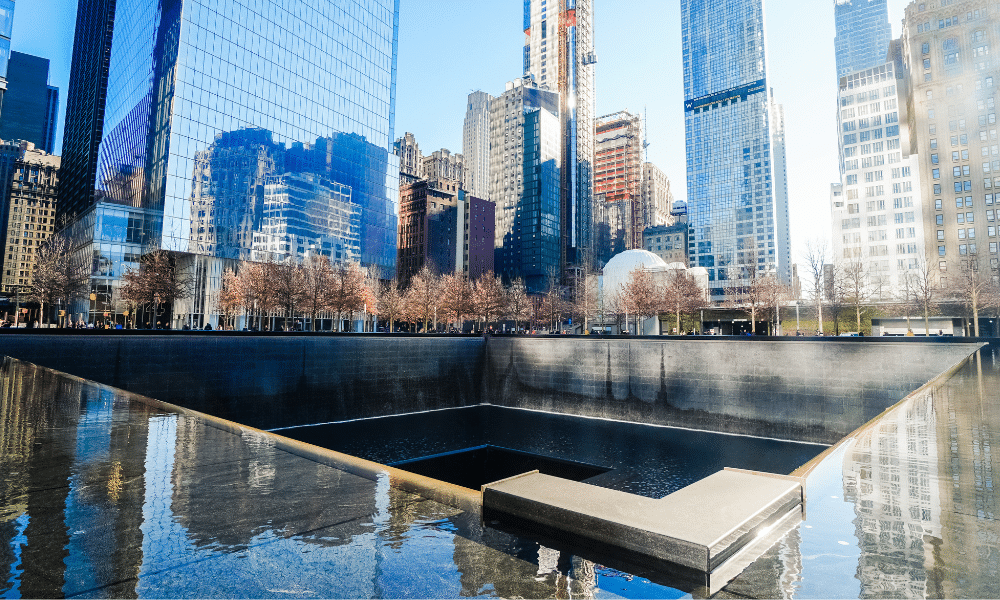
It surprises some people to learn that many more people have died from the effects of the 9/11 toxic dust than from the terrorist attacks themselves.
For New Yorkers lucky enough to escape the direct attacks, a new deadly threat unfolded in the hours, days, weeks, and months following as a plume of toxic dust enveloped downtown Manhattan.
But how far did the dust travel on and after 9/11? Most importantly for anyone who lived, worked or studied in the exposure zone in the aftermath of the attacks, could the toxic dust have impacted their health?
Serious medical conditions have been associated with exposure to the plume, so let’s take a closer look at the nature of this toxic dust and who is eligible for compensation and free medical care.
How far did the toxic dust travel after 9/11?
Precise statistics on how far the toxic dust traveled after 9/11 are difficult to come by but remote sensing could help track the drift of harmful pollutants following the attacks.
One study conducted by a senior research scientist at the Jet Propulsion Laboratory in collaboration with other researchers determined that the toxic dust plume rose almost a mile and drifted approximately 44 miles downwind the following day.
NASA photographs from space showed the smoke plume from the World Trade Center collapse drifting over New York City and New Jersey on September 11, 2001.
Responders and survivors often wore no protective gear when exposed to this cloud, especially in the early days of exposure. Little did people know then the extent of the health risks posed by exposure to this cloud.
In the 20-plus years since the attacks, the tireless efforts of those who have taken up the cause of the 9/11 responders and survivors exposed to the dust have helped highlight the detrimental health impact.
Where is the “exposure zone” in NYC?
The World Trade Center Health Program (WTCHP) and the 9/11 Victim’s Compensation Fund (VCF) are the two federal government programs set up to help victims whose health was negatively impacted by exposure to toxic dust.
The VCF and the WTCHP have different exposure zone definitions and dates for eligibility, with the WTC Health Program covering a wider area:
- Victim Compensation Fund: Lower Manhattan south of Houston** Street or any other location where the 9/11 debris was handled, such as the Medical Examiner’s office, Fresh Kills landfill, or along any routes where the 9/11 debris was transported.
- WTC Health Program: South of Houston Street and also parts of Brooklyn, including Brooklyn Heights.
To be eligible for healthcare or compensation, victims must fall into one of the following three categories:
- First responders present at Ground Zero, the Staten Island Landfill or the NYC Chief Medical Examiner’s Office for a minimum of four hours between September 11, 2001, and July 31, 2002 (May 30, 2002, for the VCF)
- WTC general responders and volunteers present for the rescue, recovery, and cleanup efforts exposed for at least four hours at Ground Zero between September 11 and September 14, 2001; at least 24 hours at the Staten Island Landfill between September 11 and September 30, 2001; and at least 80 hours at certain barge or loading piers between September 11, 2001, and July 31, 2002 ((May 30, 2002, for the VCF)
- Survivors who lived, worked or studied in the area south of Houston Street from September 11, 2001, to July 31, 2002 (May 30, 2002, for the VCF) for at least four days.
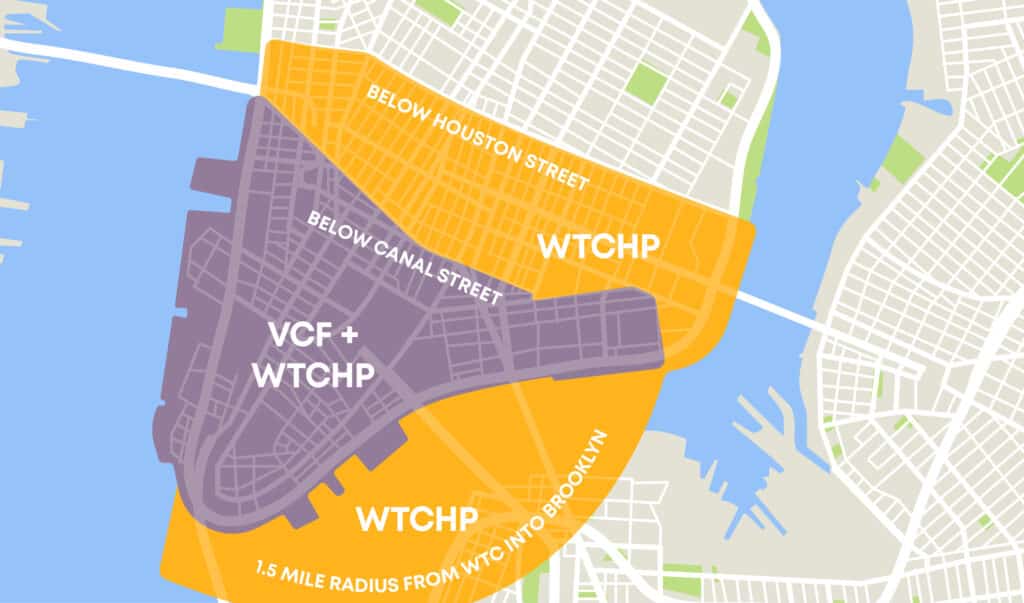
Are you eligible for compensation if you were not in the exposure zone?
One question that is often asked is whether those who lived 44 miles away on 9/11 are eligible for compensation for health issues.
Unfortunately, they are not. Nobody present outside of the designated exposure zone between 9/11 and May 30, 2002 (or present for less than the minimum specified periods) can generally claim free healthcare or compensation through the two programs available.
The dust that spread out from Lower Manhattan still contained many of the same toxins and carcinogens as the dust at Ground Zero but at much lower concentrations. So, the toxicity of the dust was deemed to lessen with time and distance and the greatest health risks were adjudged to have been experienced by those within a very defined exposure zone during the dates outlined above.
What was in the WTC toxic dust?
In the immediate aftermath of the 9/11 attacks, it was well-known that high levels of asbestos were contained in the dust plume that hung over NYC—but it would take months before the presence of many other toxins was confirmed.
The toxic dust cloud included:
- Cement and calcium carbonate
- Insulation fibers
- Particle aggregate from building materials
- Steel and other metal particles, including copper, iron, and titanium
- Gypsum (from drywall)
- Cellulose (from paper)
- Synthetic fibers from carpets/rugs
- Glass fibers
- Human hair
This contributed many known carcinogens and toxins to the air that people were breathing, initially being told that it was safe by the Environmental Protection Agency (EPA).
The health impacts of the toxic dust
Many individuals who have suffered health issues since 9/11 and were in the exposure zone for at least the minimum periods during the eligible dates are still not aware that they may be eligible for healthcare and compensation.
The WTC Health Registry was set up in the years after the attacks to learn more about the health impacts of 9/11. After this, the WTCHP and VCF programs were created to make it easier for people to claim assistance for health problems that resulted from simply doing what they were asked to do or volunteered for after the attacks.
The following health issues have been associated with exposure to the toxic 9/11 dust:
- Over 70 types of cancer
- Respiratory conditions, especially asthma and chronic lung diseases
- Ear, nose, and throat conditions
- Digestive disorders
- Mental health problems, such as depression and post-traumatic stress disorder (PTSD)
Many survivors and responders have had to live with their adverse health conditions in the two-plus decades since the attacks, while others have experienced symptoms more recently from slower-developing conditions like lung cancers and mesothelioma. Problems continue to this day for many, still affecting those exposed to the toxic dust—and their families.
To discuss your situation and learn more about how we may be able to help you, please call Weisfuse & Weisfuse, LLC at 212-983-3000 or contact us online to schedule a free consultation.
If the cancer is localized, an operation may be able to remove all of the cancerous tissue. If the cancer has spread to other areas of the body, doctors will need to assess whether surgery can improve the quality of life of the patient.
Digestive system surgery can sometimes lead to significant complications, making eating and going to the bathroom more challenging. This needs to be considered before a decision is made to proceed with surgery.
To discuss your situation and learn more about how we may be able to help you, please call Weisfuse & Weisfuse, LLC at 212-983-3000 or contact us online to schedule a free consultation.
** Numerous advertisements and media outlets are informing New Yorkers about their possible eligibility for 9/11 benefits if they were in Lower Manhattan during the attacks and suffer from health conditions due to toxic dust exposure. At Weisfuse & Weisfuse LLP, we emphasize that the “exposure zone” isn’t limited to Canal Street but can extend further to Houston Street.
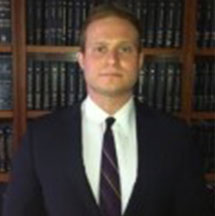
About Jason Weisfuse –
9/11 Victim Compensation Fund Attorney
About Jason Weisfuse –
9/11 Victim Compensation Fund Attorney
Jason E. Weisfuse is a seasoned 9/11 cancer attorney and managing partner at Weisfuse & Weisfuse, LLC, a New York City-based law firm dedicated to representing individuals affected by the September 11th attacks. Since the establishment of the September 11th Victim Compensation Fund (VCF), Jason has been instrumental in assisting first responders, survivors, and families in securing the compensation and medical benefits they deserve.
With a Juris Doctor from New York Law School (2009), Jason brings extensive experience regarding the 9/11 Victim Compensation Fund to his practice. His deep understanding of the VCF and the World Trade Center Health Program (WTCHP) has enabled him to navigate complex claims processes effectively, resulting in substantial awards for his clients.
Jason’s commitment to the victims in the 9/11 community is evident through his active involvement in professional organizations such as the New York State Trial Lawyers Association and the American Association for Justice. He has also contributed to legal discourse with publications in the New York Law Journal, reflecting his dedication to legal excellence and advocacy.
At Weisfuse & Weisfuse, LLC, Jason continues to provide compassionate and knowledgeable representation, ensuring that those affected by 9/11 receive the support and compensation they are entitled to.
